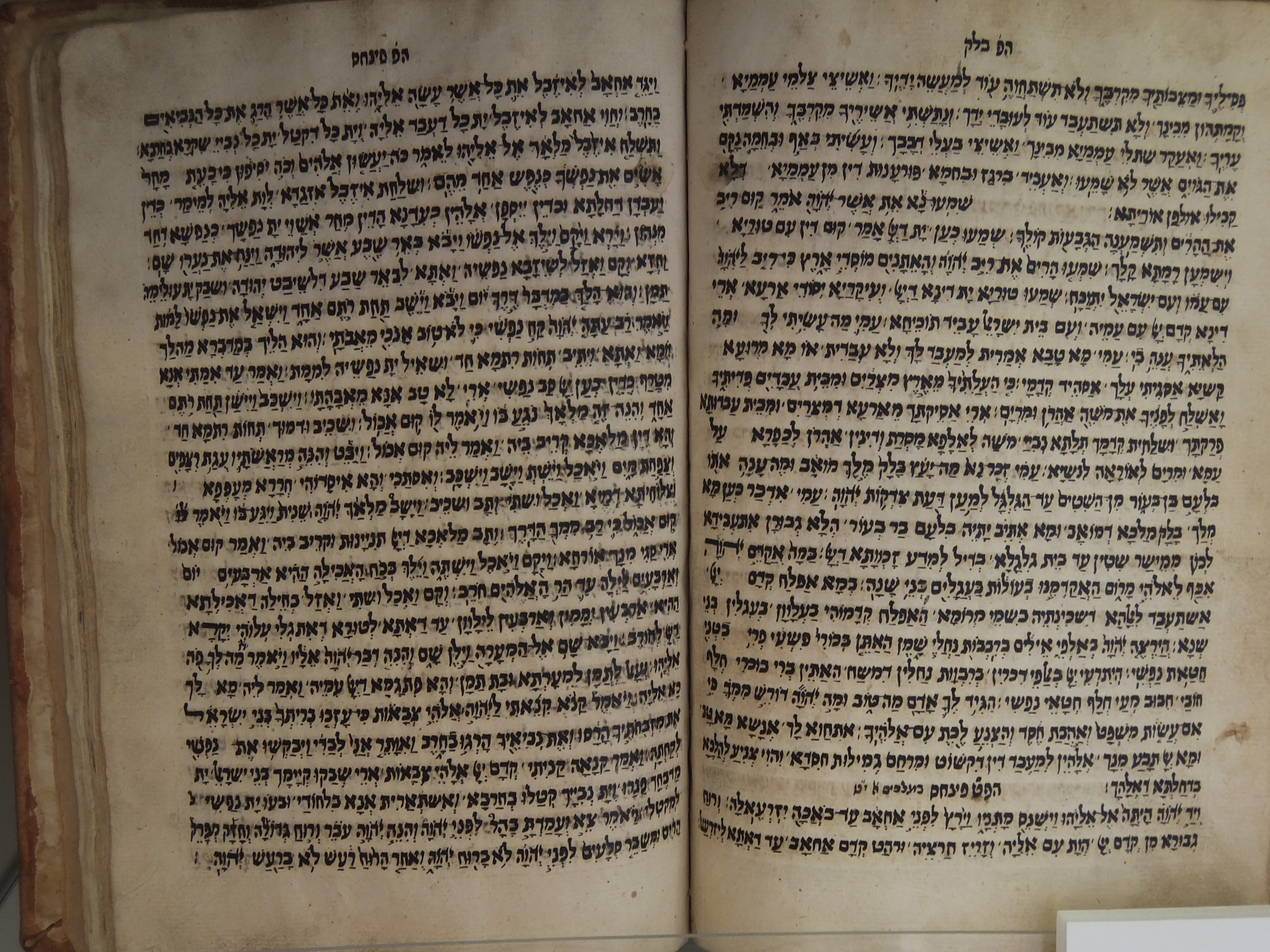|
DC Minyan
The DC Minyan is a lay-led unaffiliated Jewish congregation that holds worship services and other events in the Washington, D.C. Jewish Community Center (DCJCC), located in the Dupont Circle area of Washington, D.C., in the United States. Founded in 2002, the congregation generally demonstrates the characteristics of an independent minyan, with a dual commitment to ''halacha''/Jewish law and egalitarianism. It's programs include Shabbat/Sabbath and Holy Day worship services, education, social events, retreats, and opportunities for '' tikkun olam'', improving and transforming the world. The leaders and members of the community seek to create "a warm and intellectually engaging community for prayer and study." Additionally, Beth Tritter, one of the group's four co-founders, stated that the minyan has been able to create worship services that exhibit "''ruach'' piritand '' kavanah'' piritual focus" The DC Minyan is part of a growing number of similar lay-led progra ... [...More Info...] [...Related Items...] OR: [Wikipedia] [Google] [Baidu] |
Independent Minyan
An independent minyan is a lay-led Jewish worship and study community that has developed independently of established denominational and synagogue structures within the organized Jewish community. Some began in the late 1990s and most since the year 2000,Speech by Elie Kaunfer, Nov. 9, 2009, at the Alliance for Continuing Rabbinic Education (ACRE). though some are several decades older. These new groups often combine a commitment to /Jewish law with |
Conservative Judaism
Conservative Judaism, known as Masorti Judaism outside North America, is a Jewish religious movement which regards the authority of ''halakha'' (Jewish law) and traditions as coming primarily from its people and community through the generations moreso than from any divine revelation. It therefore views ''halakha'' as both binding and subject to historical development. The Conservative rabbinate employs modern historical-critical research, rather than only traditional methods and sources, and lends great weight to its constituency when determining its stance on matters of practice. The movement considers its approach as the authentic and most appropriate continuation of ''halakhic'' discourse, maintaining both fealty to received forms and flexibility in their interpretation. It also eschews strict theological definitions, lacking a consensus in matters of faith and allowing great pluralism. While regarding itself as the heir of Rabbi Zecharias Frankel's 19th-century Positive-H ... [...More Info...] [...Related Items...] OR: [Wikipedia] [Google] [Baidu] |
Partnership Minyan
Partnership minyan (pl. partnership minyanim) is a religious Jewish prayer group that seeks to maximize women's participation in services within the confines of Jewish law as understood by Orthodox Judaism. This includes enabling women to lead parts of service, read from the Torah, serve in lay leadership positions, sit in a more gender-balanced format, and in some cases count as part of a minyan ("quorum") of ten men and ten women. Partnership minyanim began in 2002 simultaneously in New York and Jerusalem, and have now spread to over 30 communities in at least five different countries around the world. Definition JOFA defines a partnership minyan as: : prayer group that is both committed to maintaining halakhic standards and practices and also committed to including women in ritual leadership roles to the fullest extent possible within the boundaries of Jewish Law. This means that the minyan is made up of 10 men, men and women are separated by a mechitzah, and the traditional li ... [...More Info...] [...Related Items...] OR: [Wikipedia] [Google] [Baidu] |
Jewish Orthodox Feminist Alliance
The Jewish Orthodox Feminist Alliance (JOFA) is an Open Orthodox Jewish organization providing educational services on women's issues, with the aim of expanding "the spiritual, ritual, intellectual, and political opportunities for women within the framework of ''Halakha''." It was incorporated on April 14, 1998, with Jewish-American writer Blu Greenberg as its first president.Jewish Orthodox Feminist Alliance, ... [...More Info...] [...Related Items...] OR: [Wikipedia] [Google] [Baidu] |
HaAretz
''Haaretz'' ( , originally ''Ḥadshot Haaretz'' – , ) is an Israeli newspaper. It was founded in 1918, making it the longest running newspaper currently in print in Israel, and is now published in both Hebrew and English in the Berliner format. The English edition is published and sold together with the ''International New York Times''. Both Hebrew and English editions can be read on the internet. In North America, it is published as a weekly newspaper, combining articles from the Friday edition with a roundup from the rest of the week. It is considered Israel's newspaper of record. It is known for its left-wing and liberal stances on domestic and foreign issues. As of 2022, ''Haaretz'' has the third-largest circulation in Israel. It is widely read by international observers, especially in its English edition, and discussed in the international press. According to the Center for Research Libraries, among Israel's daily newspapers, "''Haaretz'' is considered the most infl ... [...More Info...] [...Related Items...] OR: [Wikipedia] [Google] [Baidu] |
Torah Scroll
A ( he, סֵפֶר תּוֹרָה; "Book of Torah"; plural: ) or Torah scroll is a handwritten copy of the Torah, meaning the five books of Moses (the first books of the Hebrew Bible). The Torah scroll is mainly used in the ritual of Torah reading during Jewish prayers. At other times, it is stored in the holiest spot within a synagogue, the Torah ark, which is usually an ornate curtained-off cabinet or section of the synagogue built along the wall that most closely faces Jerusalem, the direction Jews face when praying. The text of the Torah is also commonly printed and bound in book form for non-ritual functions, called a (plural ) ("five-part", for the five books of Moses), and is often accompanied by commentaries or translations. History The En-Gedi Scroll is an ancient Hebrew parchment found in 1970 at Ein Gedi, Israel. Radiocarbon testing dates the scroll to the third or fourth century CE (210–390 CE), although paleographical considerations suggest that the s ... [...More Info...] [...Related Items...] OR: [Wikipedia] [Google] [Baidu] |
Mechitza
A ''mechitza'' ( he, מחיצה, partition or division, pl.: , ) in Judaism, is a partition, particularly one that is used to separate men and women. The rationale in halakha (Jewish law) for a partition dividing men and women is derived from the Babylonian Talmud. A divider in the form of a balcony was established in the Temple in Jerusalem for the Simchat Beit HaShoeivah ceremony, a time of great celebration and festivity. The divider was first established to preserve modesty and attention during this time. During the mid-20th century, a substantial number of Orthodox synagogues did not have mechitzot. However, the Orthodox Union (OU), the main body of Modern Orthodox synagogues in the United States, adopted a policy of not accepting as new members synagogues without mechitzot, and strongly encouraged existing synagogues to adopt them. Men and women are generally not separated in most Conservative synagogues, but it is a permissible option within Conservative Judaism; some Co ... [...More Info...] [...Related Items...] OR: [Wikipedia] [Google] [Baidu] |
The Washington Post
''The Washington Post'' (also known as the ''Post'' and, informally, ''WaPo'') is an American daily newspaper published in Washington, D.C. It is the most widely circulated newspaper within the Washington metropolitan area and has a large national audience. Daily broadsheet editions are printed for D.C., Maryland, and Virginia. The ''Post'' was founded in 1877. In its early years, it went through several owners and struggled both financially and editorially. Financier Eugene Meyer purchased it out of bankruptcy in 1933 and revived its health and reputation, work continued by his successors Katharine and Phil Graham (Meyer's daughter and son-in-law), who bought out several rival publications. The ''Post'' 1971 printing of the Pentagon Papers helped spur opposition to the Vietnam War. Subsequently, in the best-known episode in the newspaper's history, reporters Bob Woodward and Carl Bernstein led the American press's investigation into what became known as the Watergate scandal ... [...More Info...] [...Related Items...] OR: [Wikipedia] [Google] [Baidu] |
Nevi'im
Nevi'im (; he, נְבִיאִים ''Nəvīʾīm'', Tiberian: ''Năḇīʾīm,'' "Prophets", literally "spokespersons") is the second major division of the Hebrew Bible (the ''Tanakh''), lying between the Torah (instruction) and Ketuvim (writings). The Nevi'im are divided into two groups. The Former Prophets ( he, נביאים ראשונים ''Nevi'im Rishonim'') consists of the narrative books of Joshua, Judges, Samuel and Kings; while the Latter Prophets ( he, נביאים אחרונים ''Nevi'im Akharonim'') include the books of Isaiah, Jeremiah, Ezekiel, and the Twelve Minor Prophets. Synopsis The Jewish tradition counts a total of eight books in ''Nevi'im'' out of a total of 24 books in the entire Tanakh: there are four books of the Former Prophets, including Joshua and Judges; the collected ''Books of Samuel'' and ''Books of Kings'' are each counted as one book. Among the four books of the Latter Prophets, the major prophets (Isaiah, Jeremiah and Ezekiel) account f ... [...More Info...] [...Related Items...] OR: [Wikipedia] [Google] [Baidu] |
Haftarah
The ''haftara'' or (in Ashkenazic pronunciation) ''haftorah'' (alt. ''haftarah, haphtara'', he, הפטרה) "parting," "taking leave", (plural form: ''haftarot'' or ''haftoros'') is a series of selections from the books of ''Nevi'im'' ("Prophets") of the Hebrew Bible (''Tanakh'') that is publicly read in synagogue as part of Jewish religious practice. The ''haftara'' reading follows the Torah reading on each Sabbath and on Jewish festivals and ta'anit, fast days. Typically, the ''haftara'' is thematically linked to the ''parashah'' (weekly Torah portion) that precedes it. The ''haftara'' is sung in a chant. (Chanting of Biblical texts is known as "''trope''" in Yiddish or "Cantillation" in English.) Related blessings precede and follow the haftara reading. The origin of haftara reading is lost to history, and several theories have been proposed to explain its role in Jewish practice, suggesting it arose in response to the persecution of the Jews under Antiochus IV Epiphane ... [...More Info...] [...Related Items...] OR: [Wikipedia] [Google] [Baidu] |
Weekly Torah Portion
It is a custom among religious Jewish communities for a weekly Torah portion to be read during Jewish prayer services on Monday, Thursday, and Saturday. The full name, ''Parashat HaShavua'' ( he, פָּרָשַׁת הַשָּׁבוּעַ), is popularly abbreviated to ''parashah'' (also ''parshah'' or parsha), and is also known as a Seder (Bible), Sidra or Sedra . The ''parashah'' is a section of the Torah (Five Books of Moses) used in Jewish liturgy during a particular week. There are 54 parshas, or ''parashiyot'' in Hebrew, and the full cycle is read over the course of one Jewish year. Content and number Each Torah portion consists of two to six chapters to be read during the week. There are 54 weekly portions or ''parashot''. Torah reading mostly follows an annual cycle beginning and ending on the Jewish holiday of Simchat Torah, with the divisions corresponding to the lunisolar calendar, lunisolar Hebrew calendar, which contains up to 55 weeks, the exact number varying betwe ... [...More Info...] [...Related Items...] OR: [Wikipedia] [Google] [Baidu] |


_DAILY_OF_THE_EARLY_20S.jpg)



